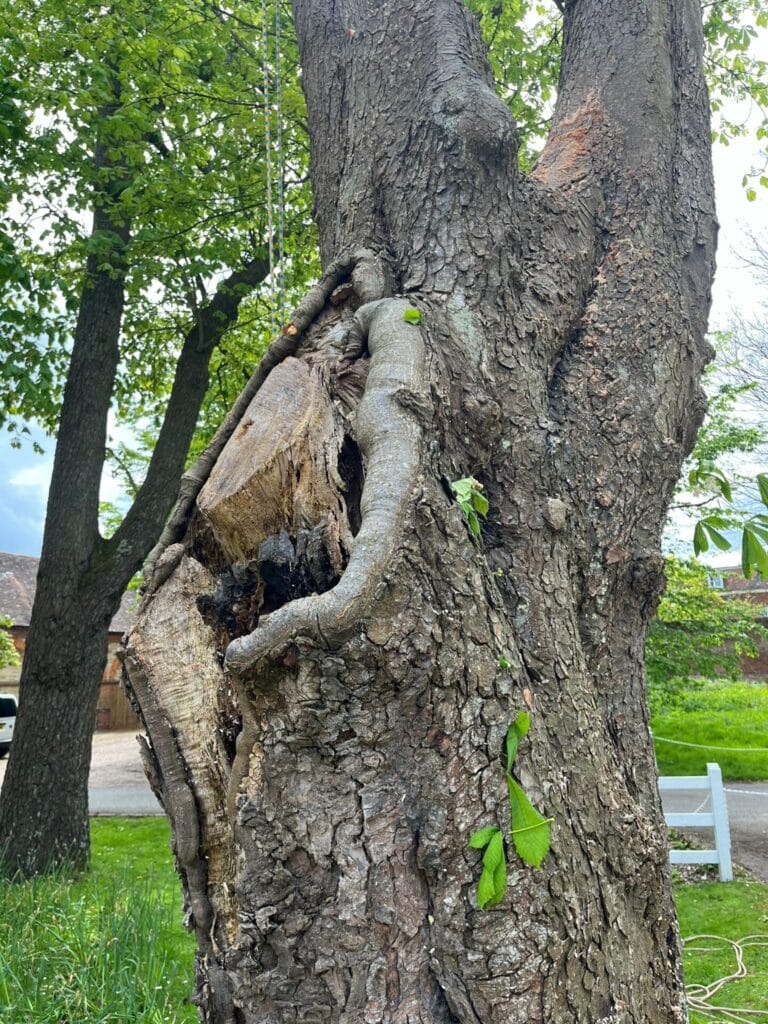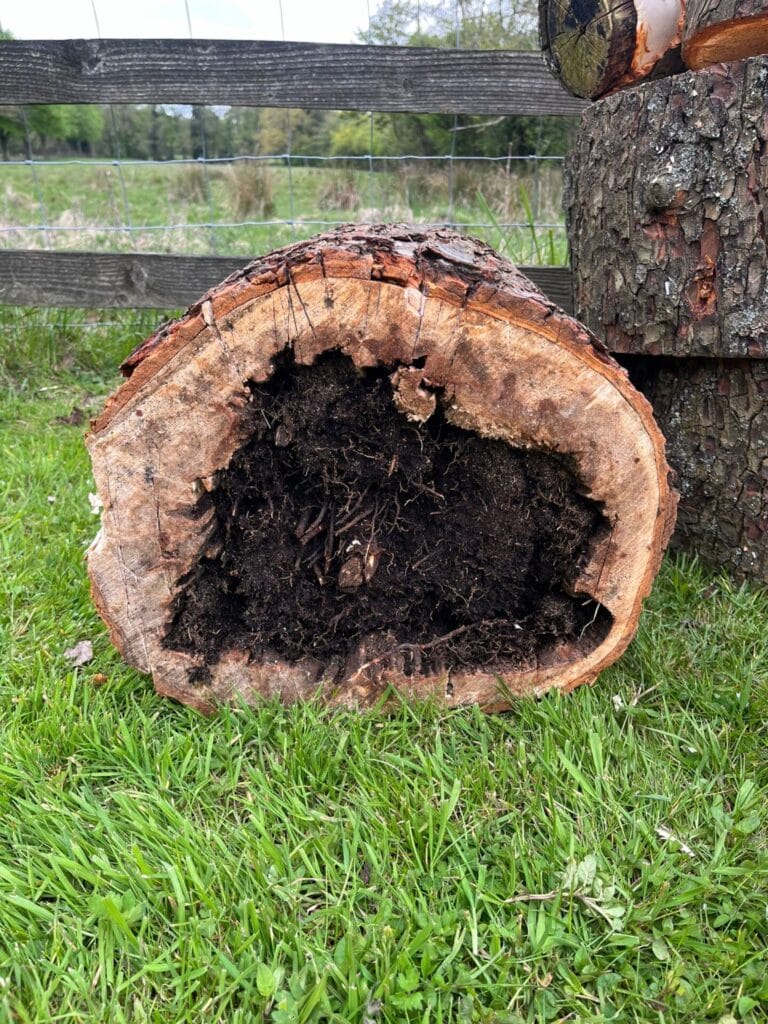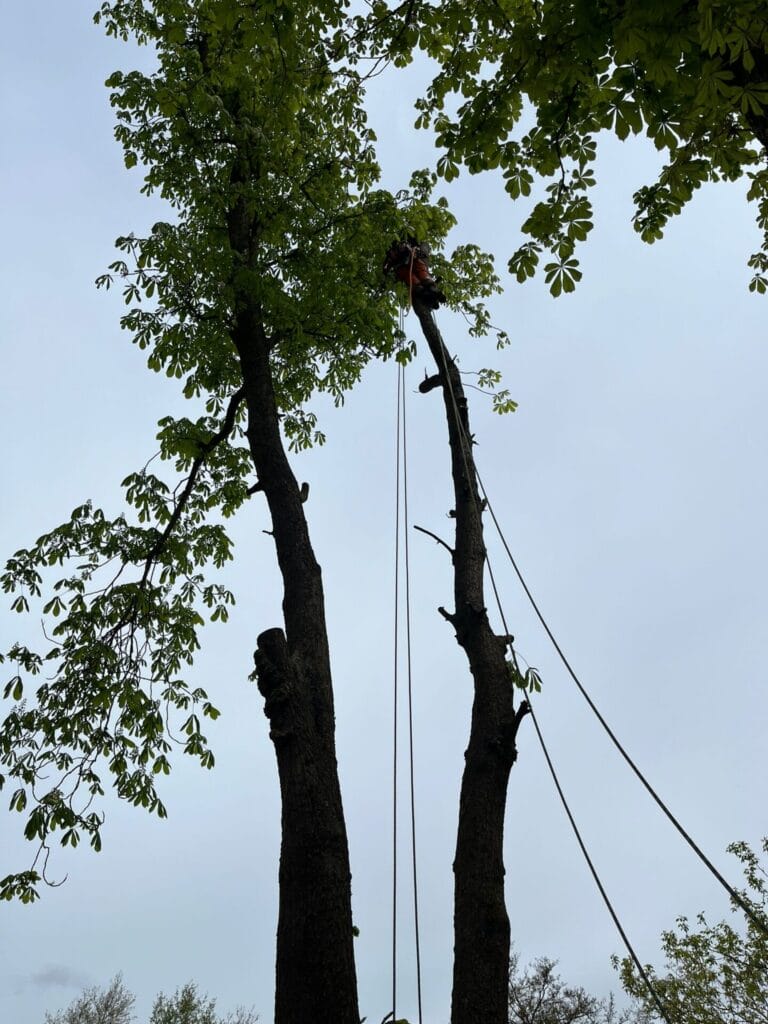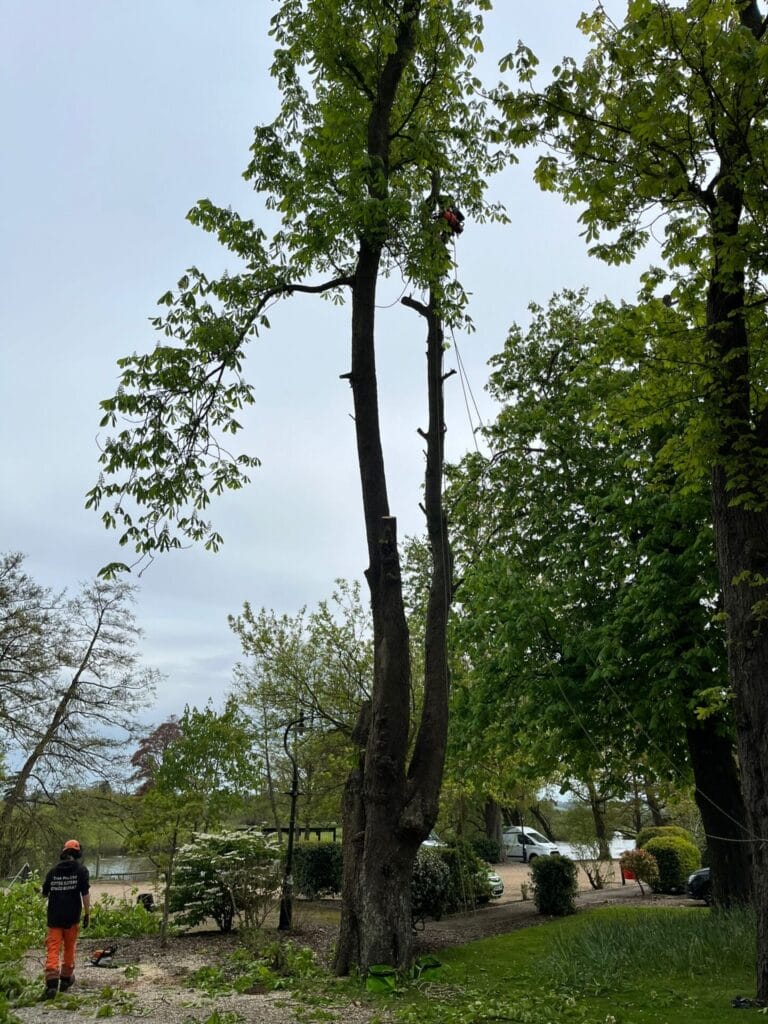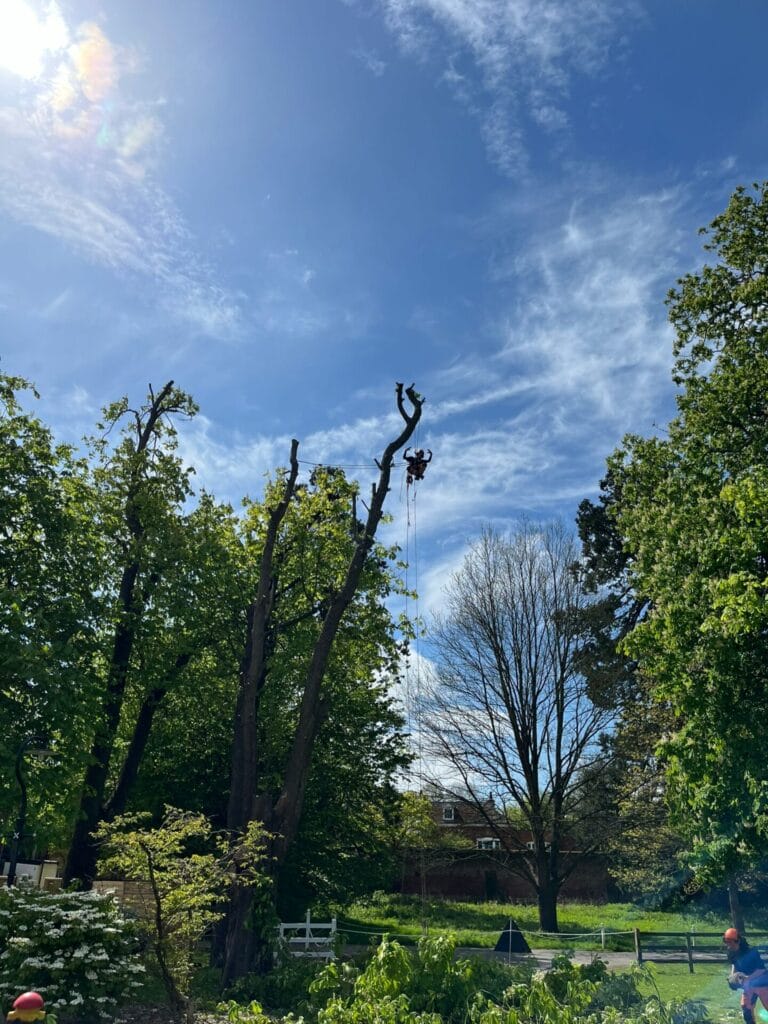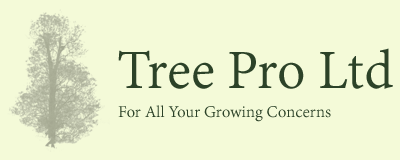At Tree Pro Ltd, our commitment to maintaining the health and safety of trees and landscapes is paramount. Recently, we undertook the removal of a horse chestnut tree for one of our commercial clients after it was discovered to be infected during the annual inspection by a tree inspector. This blog post details the process and importance of such removals, ensuring the safety of the environment and surrounding properties.
The Importance of Annual Inspections
Annual tree inspections are critical for the early detection of diseases and potential hazards. Our experienced tree inspectors meticulously examine each tree, looking for signs of disease, decay, or structural weaknesses. Early detection can often lead to treatment and preservation. However, in some cases, like that of the infected horse chestnut tree, removal becomes the necessary course of action.
Identifying the Infection
Horse chestnut trees are susceptible to various diseases, such as leaf blotch, bleeding canker, and root rot. During the inspection, our tree expert identified signs of significant disease:
- Bleeding Canker: This bacterial infection causes dark, bleeding lesions on the bark, leading to branch dieback and eventual tree death.
- Leaf Blotch: Caused by a fungal pathogen, this disease results in unsightly brown spots on the leaves, which can weaken the tree over time.
- Root Rot: Often a result of waterlogged soils, this condition compromises the stability of the tree, making it a potential hazard.
Upon confirming the diagnosis, the inspector recommended immediate removal to prevent the spread of disease and to ensure the safety of the area.
The Removal Process
Tree removal is a complex and carefully coordinated process, especially in a commercial setting where safety and minimal disruption are priorities. Here’s how we approached the removal:
- Safety Assessment and Planning: Our team conducted a thorough risk assessment, considering factors like the tree’s location, size, and proximity to buildings and walkways. A detailed removal plan was developed, outlining the steps and necessary equipment.
- Securing the Area: Safety barriers and warning signs were erected to secure the area, ensuring the safety of employees, clients, and passersby.
- Controlled Dismantling: Using specialised equipment, our certified arborists carefully dismantled the tree in sections. This method minimises the risk of damage to surrounding structures and landscapes.
- Stump Grinding and Site Cleanup: After safely removing the tree, the stump was ground down to below ground level to prevent regrowth and eliminate a tripping hazard. The area was thoroughly cleaned, leaving the site neat and safe.
Post-Removal Care
Following the removal, our team provided recommendations for post-removal care, including soil treatment to prevent future infections and the selection of suitable replacement trees. This ensures that the landscape remains healthy and visually appealing.
Conclusion
Removing a diseased horse chestnut tree is not just about addressing the immediate problem but also about safeguarding the future health and safety of the landscape. At Tree Pro Ltd, we take pride in our meticulous approach, ensuring that our clients’ properties remain safe, beautiful, and sustainable.
If you have concerns about the health of your trees or need professional tree care services, don’t hesitate to contact us. Our team of experts is always ready to assist with inspections, treatments, and, when necessary, safe and efficient tree removal.
